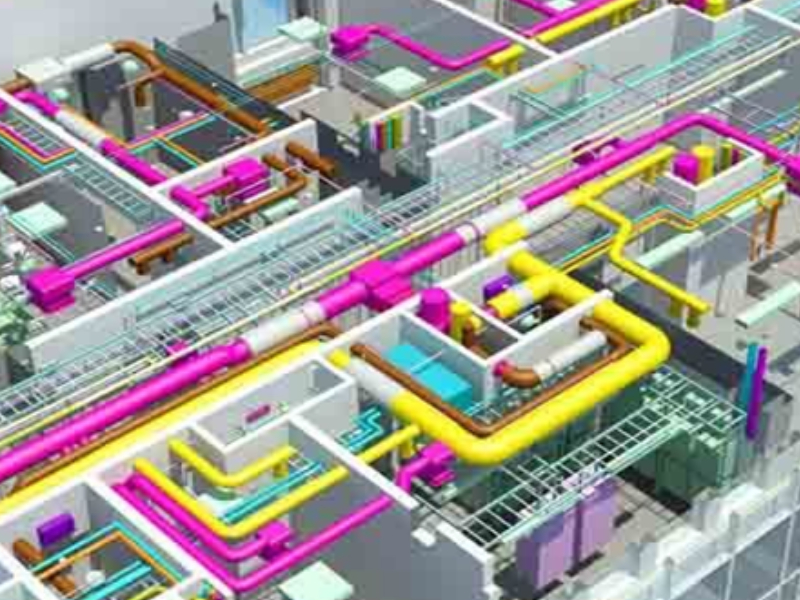MEP Drafting is a crucial discipline in building design that involves creating precise technical drawings for Mechanical, Electrical, and Plumbing systems. It ensures accurate planning, coordination, and documentation of essential services in residential, commercial, and industrial structures.
With advanced tools and standards-based practices, MEP drafting enables seamless integration of systems, reduces design conflicts, and enhances construction efficiency. As the demand for smart, sustainable, and code-compliant infrastructure grows, skilled MEP drafters are increasingly valued in architectural, engineering, and construction industries.
Field Scope & Importance
- Efficient System Coordination
- Code Compliance & Regulatory Standards
- Sustainable Building Design
- Enhanced Construction Efficiency
- Improved Collaboration Across Disciplines
- Streamlined Project Lifecycle
Working Steps for MEP Drafting

Layout Planning
Review architectural drawings and determine space for mechanical, electrical, and plumbing systems. Coordinate with other disciplines to avoid clashes.

System Drafting
Create detailed 2D/3D schematics for HVAC, piping, electrical, and fire systems. Ensure components follow codes and project standards.

Clash Coordination
Use software tools to identify and resolve system interferences. Align MEP elements with architectural and structural components.

Final Documentation
Add dimensions, labels, legends, and schedules to drawings. Prepare submission-ready files for engineers, contractors, and site teams.
Curriculum
- Streamlined Project Lifecycle
- CREATE SPACE & ZONES
- LOAD ANALYSIS & SCHEDULE
- PLUMBING & PIPING SYSTEM
- ELECTRICAL SYSTEM
- FAMILY CREATION
- WORKSETS & WORKSHARING
- TITLE BLOCK
Core Function of MEP Drafting

Understanding Industry Codes & Standards
Equip learners with knowledge of key regulatory frameworks like NEC, IPC, ASHRAE, and NFPA to ensure design and documentation compliance.

Code-Compliant Drafting Techniques
Train professionals to apply drafting methods that meet national and international compliance requirements in real-world projects.

Clash Detection & Resolution
Focus on resolving MEP system conflicts using compliant coordination practices, enhancing safety and efficiency on site.

Regulatory Preparation
Develop the ability to create accurate and approval-ready shop drawings, schematics, and permit sets for inspection authorities.

Sustainability & Energy Compliance
Integrate green building codes and energy-efficient practices into drafting, aligning designs with LEED, IGBC, or GRIHA standards.

Audit-Ready Project Files
Ensure learners can organize and present project documentation that withstands third-party audits and regulatory scrutiny.


